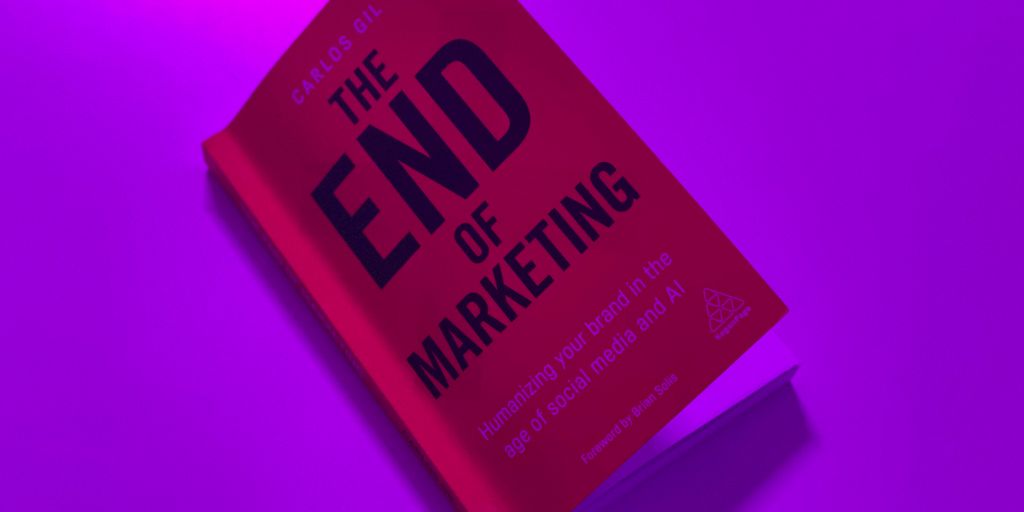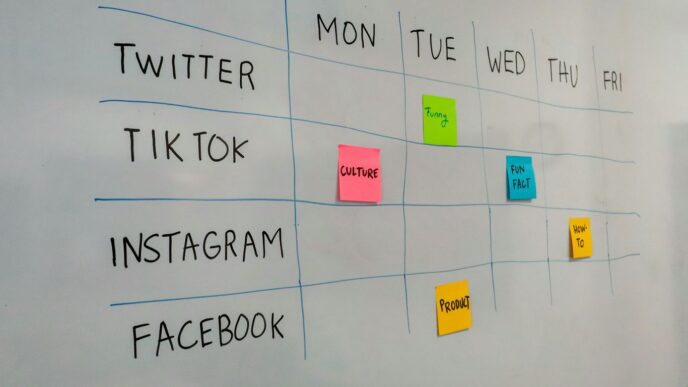So, you wanna talk about marketing, huh? Specifically, content marketing vs inbound marketing. It’s pretty easy to mix these two up, and honestly, a lot of people do. They sound similar, and they definitely work together, but they’re not the same thing. Think of it like this: one is a tool, and the other is a whole toolbox. We’re gonna break down what each one is, how they’re different, and how they can actually team up to help your business get more customers and keep them happy. Let’s dig in.
Key Takeaways
- Content marketing is all about making and sharing stuff people actually want to read or watch.
- Inbound marketing is a bigger plan to attract customers by being helpful, not pushy.
- They have different main goals: content often aims for broad reach, while inbound targets specific customer journeys.
- Content is a big part of inbound marketing; you can’t really do inbound without good content.
- To really succeed, you need to use both content marketing and inbound marketing together, making sure they fit your business goals.
Defining Content Marketing
Okay, so what is content marketing? It’s more than just throwing up a few blog posts and hoping for the best. It’s a strategic approach, and it’s all about giving people stuff they actually want to see and read. Think of it as being helpful first, and then selling.
Core Principles of Content Creation
Content creation is the heart of content marketing. It’s about making stuff that’s relevant, useful, and consistent for your audience. It’s not just about pushing your product; it’s about providing value. This could be anything from blog posts and videos to infographics and ebooks. The key is to understand what your audience needs and then create content that addresses those needs. For example, if you’re selling project management software, you might create content about common project management challenges and how to overcome them. This article itself is a piece of content marketing.
Strategic Distribution Channels
Creating great content is only half the battle. You also need to make sure people actually see it. That’s where distribution channels come in. This includes things like:
- Social media: Sharing your content on platforms like Facebook, Twitter, and LinkedIn.
- Email marketing: Sending newsletters and updates to your subscribers.
- SEO: Optimizing your content so it ranks higher in search engine results.
- Paid advertising: Using paid ads to promote your content to a wider audience.
Choosing the right distribution channels depends on your target audience and your goals. If you’re trying to reach a younger audience, you might focus on social media. If you’re trying to generate leads, you might focus on email marketing. It’s all about finding the channels that work best for you. Think about using [email marketing](email marketing) to get your content out there.
Building Audience Engagement
Content marketing isn’t a one-way street. It’s about building relationships with your audience. That means encouraging them to interact with your content and with each other. Here are a few ways to do that:
- Ask questions: Encourage your audience to leave comments and share their thoughts.
- Run contests and giveaways: Get people excited about your brand and your content.
- Respond to comments and messages: Show your audience that you’re listening and that you care.
By building audience engagement, you can create a loyal following that will keep coming back for more. It’s about creating a community around your brand and your content. This helps solidify the brand’s stature as an industry frontrunner.
Understanding Inbound Marketing

Inbound marketing is all about attracting customers to you, instead of you going out to find them. Think of it like this: instead of cold calling, you’re creating content that people actually want to see, so they come to your website for answers. It’s a more natural, less intrusive way of doing things.
Attracting Qualified Leads
The main goal here is to bring in the right kind of people – those who are genuinely interested in what you have to offer. You don’t want just anyone clicking on your site; you want potential customers. This involves understanding what your ideal customer is searching for and creating content that addresses their needs. It’s like setting up a beacon that only the right ships can see.
Guiding the Buyer’s Journey
Once you’ve attracted someone, the next step is to guide them through the buyer’s journey. This means providing them with the information they need at each stage, from awareness to consideration to decision. Think of it as a helpful tour guide, leading them step-by-step towards becoming a customer.
Conversion and Customer Retention
Getting someone to buy something is great, but it’s not the end of the story. Inbound marketing also focuses on turning those customers into loyal fans. This means providing excellent customer service, staying in touch, and continuing to offer value even after the sale. It’s about building a long-term relationship, not just a one-time transaction.
Here’s a simple breakdown of how inbound marketing can boost customer retention:
- Personalized email campaigns
- Loyalty programs
- Exclusive content for existing customers
Key Distinctions in Approach
While both content and inbound marketing aim to grow your business, they do so with different strategies. It’s like using a hammer versus a full toolbox – both can build something, but one offers way more flexibility.
Target Audience Focus
Inbound marketing is all about attracting the right people – those who are already interested in what you sell. It’s designed to speak directly to their needs at each stage of their buying journey. Content marketing, on the other hand, often casts a wider net. It aims to attract and inform a broader audience, not necessarily focusing on those ready to buy right now. Think of it as building general brand awareness versus targeting specific potential customers.
Scope of Marketing Activities
Content marketing is a key part of inbound marketing, but it’s not the whole picture. Content focuses on creating and sharing stuff like blog posts, videos, and social media updates. Inbound marketing takes a more holistic approach. It includes content, sure, but also things like SEO strategies, email marketing, and lead nurturing. It’s about creating a complete experience that guides potential customers from initial awareness to becoming happy, repeat buyers.
Measurement and ROI
Both strategies track how well they’re working, but they look at different things. Content marketing might focus on metrics like how many people viewed a blog post or shared it on social media. Inbound marketing looks at the bigger picture, like how many leads turned into customers and what the customer lifetime value is. It’s about measuring the entire funnel, not just individual pieces of content.
The Relationship Between Content and Inbound Marketing
It’s easy to get these two mixed up, but they really do work together. Think of it like this: content marketing is a part of inbound marketing. You can’t really do inbound marketing without content, and content marketing is way more effective when it’s part of a bigger inbound strategy. Let’s break it down.
Content as a Component of Inbound
Content is the fuel that powers the inbound marketing engine. Without great blog posts, helpful guides, engaging videos, and compelling social media updates, your inbound strategy is going nowhere. Inbound marketing is all about attracting customers to you, instead of interrupting them with traditional advertising. And how do you attract them? With awesome content that solves their problems and answers their questions. Think of content creation as the foundation upon which you build your entire inbound strategy.
Synergistic Marketing Efforts
Content marketing on its own can be effective, but when combined with inbound tactics, it becomes a powerhouse. Inbound marketing provides the structure and strategy to make sure your content is seen by the right people, at the right time. This means using SEO to optimize your content for search engines, promoting it on social media, and using email marketing to nurture leads who have downloaded your content. It’s about creating a trust-based marketing strategy that guides potential customers through the sales funnel.
Achieving Business Objectives
Ultimately, the goal of both content and inbound marketing is to drive business results. Whether it’s generating leads, increasing sales, or building brand awareness, these two approaches work together to help you achieve your objectives. Content attracts visitors, inbound converts them into leads, and then nurtures those leads into paying customers. It’s a streamlined sales cycle that focuses on providing value at every stage of the customer journey.
Here’s a simple table to illustrate how they work together:
| Feature | Content Marketing | Inbound Marketing |
|---|---|---|
| Focus | Creating and distributing content | Attracting, converting, and delighting customers |
| Goal | Attract and engage an audience | Generate leads and drive sales |
| Tactics | Blogging, social media, video marketing | SEO, email marketing, lead nurturing |
| Relationship | A key component | A holistic strategy that includes content |
Strategic Implementation of Content Marketing
Okay, so you’re sold on content marketing. Great! But just churning out blog posts and hoping for the best isn’t going to cut it. You need a plan. A real, strategic plan. Think of it like this: you wouldn’t build a house without blueprints, right? Same goes for content marketing. Let’s break down how to actually make this work.
Defining Clear Objectives
First things first: what do you actually want to achieve? Are you trying to get more leads? Boost brand awareness? Drive sales? Your objectives need to be crystal clear from the start. Otherwise, you’re just wandering around in the dark. Make sure they’re measurable too. "More leads" is vague. "Increase qualified leads by 20% in Q4" is much better. Here’s a quick example:
- Increase website traffic by 30% in six months.
- Generate 50 new qualified leads per month.
- Improve brand awareness, measured by social media mentions, by 15%.
Identifying Your Target Audience
Who are you trying to reach? Don’t say "everyone." That’s a recipe for disaster. You need to know your ideal customer inside and out. What are their pain points? What questions are they asking? Where do they hang out online? Create detailed buyer personas. Give them names, jobs, and hobbies. The more specific you are, the better you can tailor your content to their needs. This is how you get targeted efforts that actually work.
Crafting Valuable Content
This is where the rubber meets the road. You know what you want to achieve, and you know who you’re talking to. Now you need to create content that actually resonates with them. Forget about just selling your product or service. Focus on providing real value. Answer their questions, solve their problems, and educate them. Think blog posts, videos, infographics, ebooks – whatever format works best for your audience. Remember, the goal is to inform, educate, and answer the searches your target customers make. A solid digital content creation strategy is key here. And don’t forget to promote your content! Share it on social media, send it to your email list, and get it in front of the right people.
Optimizing for Inbound Success
Okay, so you’ve got your content humming and you’re attracting leads. Now what? It’s time to really dial in your inbound strategy to make sure you’re not just getting traffic, but converting that traffic into happy customers. It’s about making the whole process smoother and more personalized.
Personalization Through Data
Personalization is key in today’s marketing landscape. Generic messages just don’t cut it anymore. People want to feel understood, and that’s where data comes in. Use the information you collect about your audience to tailor their experience. This could be anything from personalized email campaigns to custom content recommendations on your website. For example, if someone downloaded an ebook about project management for remote teams, you know they’re interested in that topic. Follow up with related articles or a case study showing how your product solves their specific pain points. Think of it as having a conversation, not just broadcasting a message.
Streamlining the Sales Cycle
Nobody likes a clunky, confusing sales process. Make it easy for potential customers to move through the funnel. This means clear calls to action, simple forms, and readily available information. Consider using marketing automation to guide leads through the process. For instance, set up a series of emails that are triggered based on a lead’s behavior. If they visit a specific product page, send them a follow-up email with more details or a special offer. A well-defined sales funnel ensures that no lead falls through the cracks and that your sales team can focus on the most promising prospects.
Nurturing Customer Relationships
Inbound marketing isn’t just about getting new customers; it’s also about keeping the ones you have. Happy customers are your best advocates. Provide exceptional service and continue to engage with them even after the sale. This could include sending regular newsletters with helpful tips, offering exclusive discounts, or simply checking in to see how they’re doing. Remember, turning customers into brand ambassadors is the ultimate goal. They’ll naturally spread the word about your business, boosting your reputation and attracting even more leads. It’s a win-win!
Measuring Effectiveness: Content Marketing vs Inbound Marketing

Tracking Content Performance
When it comes to content marketing, it’s all about seeing how your content is doing. Are people actually reading your blog posts? Are they watching your videos? You need to keep an eye on things like page views, time spent on page, social shares, and content engagement. These metrics tell you if your content is resonating with your audience. If you’re not getting the numbers you want, it might be time to rethink your content strategy. Are you using the right keywords? Is your content interesting enough? These are the questions you need to ask.
Analyzing Inbound Funnel Metrics
Inbound marketing is a bit more complex. It’s not just about the content itself, but also about how that content moves people through the sales funnel. You’ll want to track things like:
- Website traffic: Are people finding your site?
- Lead generation: Are you turning visitors into leads?
- Conversion rates: Are those leads turning into customers?
- Customer acquisition cost: How much are you spending to get a new customer?
Inbound marketing uses content to turn website visitors into leads, so you need to see how well that content is working at each stage. For example, you might look at the click-through rates on your emails or the conversion rates on your landing pages. If something isn’t working, you can tweak it to improve performance.
Aligning Goals with Outcomes
Ultimately, the goal is to make sure your marketing efforts are actually helping your business. You need to connect your content and inbound marketing activities to your overall business objectives. Are you trying to increase brand awareness? Generate more leads? Drive more sales? Whatever your goals, you need to track the right metrics to see if you’re on track. Here’s a simple table to illustrate:
| Goal | Content Marketing Metric | Inbound Marketing Metric | Business Outcome |
|---|---|---|---|
| Increase Brand Awareness | Social Shares | Website Traffic | Higher Brand Recognition |
| Generate Leads | Content Downloads | Lead Conversion Rate | More Qualified Leads |
| Drive Sales | Product Page Views | Customer Acquisition Cost | Increased Revenue |
By aligning your goals with specific metrics, you can get a clear picture of what’s working and what’s not. This allows you to make data-driven decisions and optimize your marketing efforts for maximum impact.
Wrapping It Up
So, we’ve talked a lot about content marketing and inbound marketing. It’s pretty clear they’re not the same thing, even if they work together a lot. Think of content marketing as making good stuff for people to read or watch. Inbound marketing is more about setting up a whole system to bring people in and turn them into customers. Knowing the difference helps you pick the right tools for your business. It’s all about getting your message out there and finding the folks who need what you offer.
Frequently Asked Questions
What exactly is content marketing?
Content marketing is all about making and sharing useful stuff like articles, videos, or pictures. The goal is to get people interested in your brand and keep them coming back, even if they’re not ready to buy something right away. It’s like being a helpful friend, giving good advice without asking for anything in return.
How is inbound marketing different?
Inbound marketing is a bigger plan that uses content marketing as one of its tools. It’s about getting customers to come to you naturally, instead of you chasing them. This means making sure your website shows up when people search for things you offer, and then guiding them through their journey until they become a customer and stay one.
Can you give me a simple example of the difference?
Think of it this way: content marketing is like baking a delicious cake (the content). Inbound marketing is the whole party planning, from inviting guests (attracting leads) to making sure they have a good time and want to come back (converting and keeping customers). The cake is a key part of the party, but it’s not the whole party.
Does content marketing fit into inbound marketing?
Yes! Content is a super important part of inbound marketing. You can’t really do inbound marketing well without good content. Content helps you attract people, teach them about your products, and build trust. So, content marketing helps power your inbound marketing efforts.
Who are these strategies trying to reach?
Content marketing usually tries to reach a lot of people, just to get your name out there and share helpful information. Inbound marketing is more focused on finding people who are already looking for what you offer and guiding them specifically towards making a purchase.
How do we know if these marketing methods are working?
For content marketing, you’d look at how many people read your articles, watch your videos, or share your posts. For inbound marketing, you’d track how many website visitors become leads, and then how many of those leads actually buy something and stay customers. It’s about seeing if your efforts are bringing in real business.














